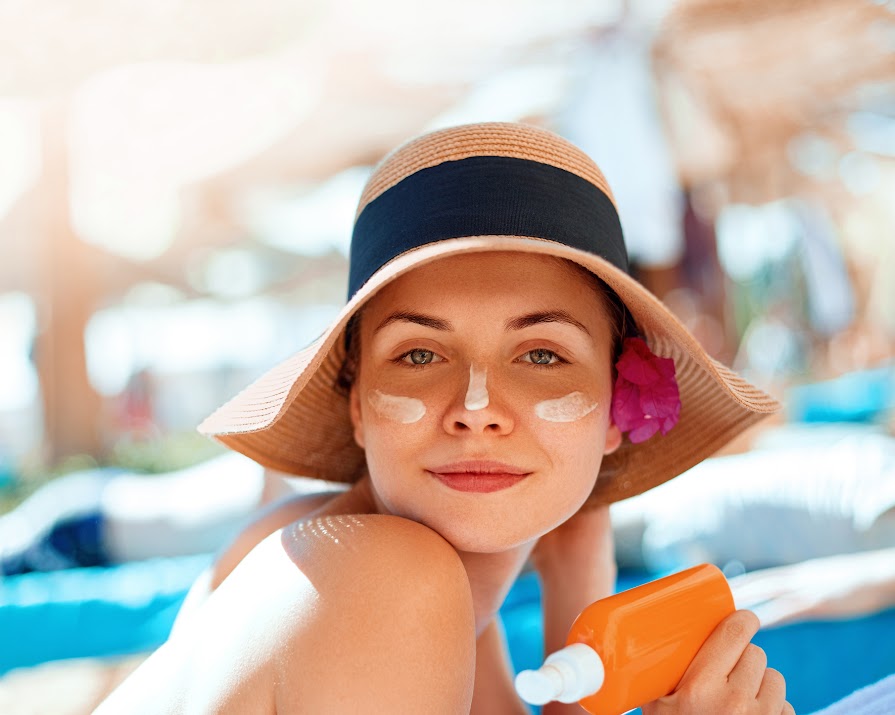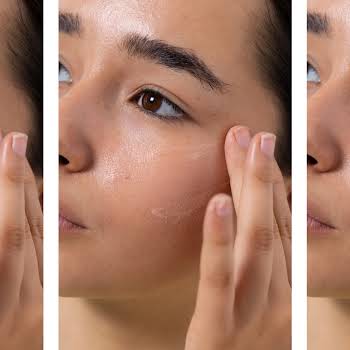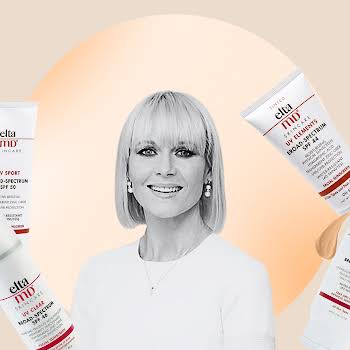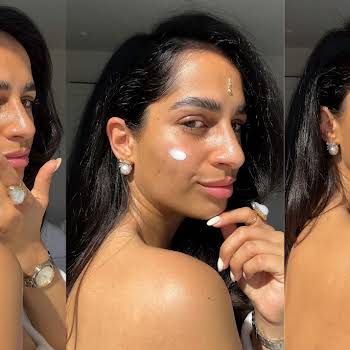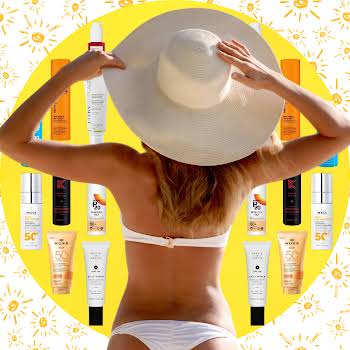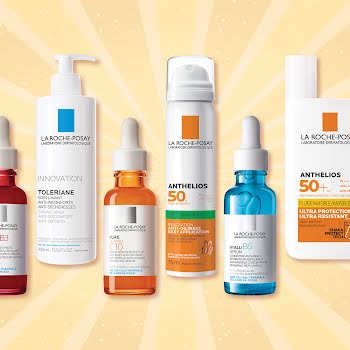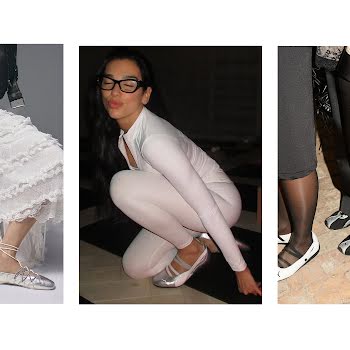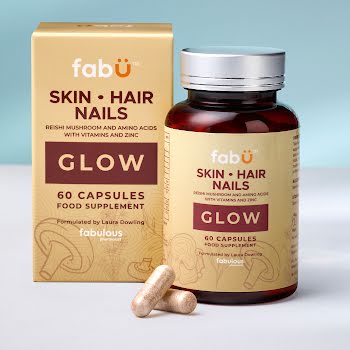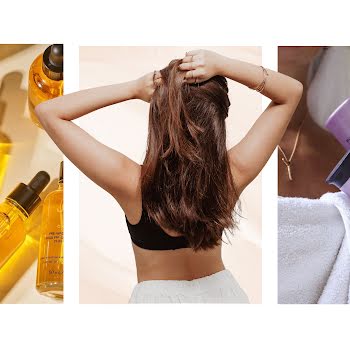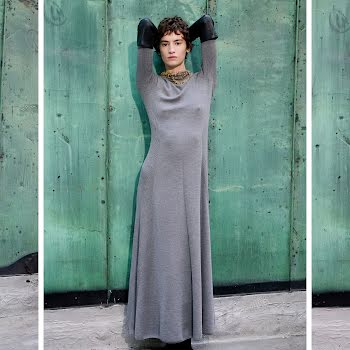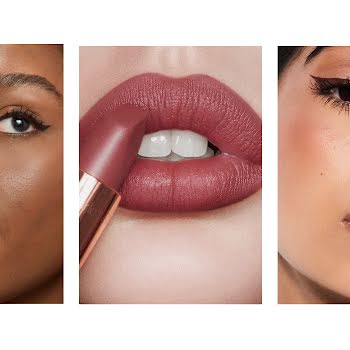
Sponsored
A dermatologist’s guide to SPF: What you should be looking for on your sunscreen label
Sponsored By

By Shayna Sappington
12th Jul 2021
12th Jul 2021
Sponsored By

A mediterranean heatwave is rolling across Europe. Make sure you're covered with SPF – here's our ultimate guide for full coverage, including the right amount, application and frequency.
While the last few weeks have been wet and windy, the forecast is predicted to be drier and sunnier next week. So, make sure you are applying SPF, even if it’s just for a short walk.
According to consultant dermatologist Prof Niki Ralph, application is just one of the vital factors to consider when using sunscreen.
We also need to make sure that we’re using a high enough factor on areas prone to sunburn and that we’re applying (and re-applying) the right amount of SPF.
Here’s Prof Niki Ralph’s recommended SPF guide, including what to look for on your sunscreen label.
When should I apply SPF?
“You should apply SPF 15 to 20 minutes before sun exposure and make sure to reapply immediately after swimming, exercising, sweating or if the skin has been towel dried – even if the SPF says it is waterproof.
“If you are using SPF on your face with other products (like moisturiser or make-up), the golden rule is that SPF is always the final product applied. So do your moisturiser or serum first, then SPF with or without makeup.”
How much should I be applying?
“I recommend applying two milligrams of sunscreen per square centimetre of skin. In practical terms, this is about two tablespoons (or a shot glass) for the entire body with swimwear on, or two teaspoons for just the upper body – head, neck and arms.”
What’s the best way to reapply and how often?
“The two biggest mistakes people often make is applying SPF too thinly, thereby reducing its protection, and not applying it frequently enough, resulting in sunburn.
“Therefore, it is recommended to apply SPF 15 to 20 minutes prior to sun exposure and reapply it every 2 hours thereafter.”
What factor of SPF should I be using and where?
“I would recommend using a minimum of SPF 30+ during winter months and 50+ during the summer (May to October).
“Daily use is recommended to all sun-exposed sites, especially the hands, neck and face, which are exposed all year round.”

Here’s what you should be looking for on the SPF labels
With so many options to choose from, it’s important that we pick an SPF that is safe to use and that provides maximum coverage.
“A bottle of SPF should say ‘broad-spectrum protection against both UVA and UVB,” says Prof Ralph. This means that it protects against both types of UV radiation.
“If the label has a UVA logo (UVA inside a circle), this also means it meets EU recommendations.” Also, be sure to check that there is a European address on the label. (Some are imported from outside the EU and may not meet European requirements for safety assessment).
Benefits of using SPF
Broad-spectrum SPF protects against both UVA and UVB rays, helping to prevent sunburn, the appearance of ageing, skin conditions and even skin cancer.
When going outdoors, SPF is vital. In fact, even if you are indoors near a window, it’s important to apply sunscreen.
“Benefits of regular SPF use include the prevention of skin cancer, wrinkles and ageing skin, irregular skin pigmentation, broken capillaries on the cheeks, nose and chest (leading to redness) and skin conditions like rosacea,” says Prof Ralph.
“Also, SPF is the most effective anti-ageing product you will ever use. Up to 90% of our wrinkles are a result of UV exposure, therefore the best anti-ageing cream on the market is an SPF.”
La Roche-Posay Anthelios Suncare Range
When it comes to choosing the right SPF for you, La Roche-Posay Anthelios Suncare range ticks all the boxes – its broad-spectrum protection is suitable for all skin types. In fact, La Roche-Posay has been an expert in sun protection for more than 25 years, working in collaboration with dermatologists worldwide. To date, the efficacy of Anthelios sun care has been proven in over 70 clinical studies.
Anthelios constantly innovates to provide pioneering intelligent formulas that are suitable for daily use and all sensitive skin. The tailor-made ‘by skin type’ sunscreens are hypoallergenic and non-greasy, making them perfect for use every day.
Favourites include the best-selling Anthelios Invisible Fluid SPF 50+, with broad-spectrum UVA/UVB protection. The lightweight ultra-resistant SPF sits perfectly under make-up making it perfect for everyday use, even in winter. Anthelios also offers a wide range of SPF for both adults and children, suitable for sensitive skin. You can shop the full range at Meaghers Pharmacy.
La Roche-Posay Anthelios Suncare is recommended by dermatologists* and is formulated with high efficacy and safety standards to address a wide range of skin needs, including sensitive skin, blemish-prone skin, and sun protection. Shop the Anthelios sun protection range now at Meaghers Pharmacy.
* Based on interviews with 6023 dermatologists – IQVIA International Dermatologists Barometer 2017/18 and 2018/19 waves.











